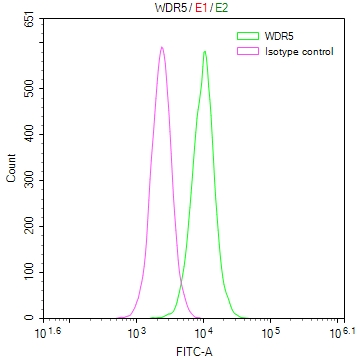SCP2 Antibody, Biotin conjugated
-
中文名稱:SCP2兔多克隆抗體, Biotin偶聯(lián)
-
貨號:CSB-PA020856DD01HU
-
規(guī)格:¥880
-
其他:
產(chǎn)品詳情
-
產(chǎn)品名稱:Rabbit anti-Homo sapiens (Human) SCP2 Polyclonal antibody
-
Uniprot No.:
-
基因名:
-
別名:DKFZp686C12188 antibody; DKFZp686D11188 antibody; NLTP antibody; NLTP_HUMAN antibody; Non-specific lipid-transfer protein antibody; Nonspecific lipid transfer protein antibody; NSL TP antibody; NSL-TP antibody; OTTHUMP00000010488 antibody; OTTHUMP00000231766 antibody; OTTHUMP00000231767 antibody; OTTHUMP00000231768 antibody; OTTHUMP00000231769 antibody; OTTHUMP00000231770 antibody; OTTHUMP00000231772 antibody; OTTHUMP00000231773 antibody; OTTHUMP00000231774 antibody; OTTHUMP00000231776 antibody; OTTHUMP00000234662 antibody; Propanoyl CoA C acyltransferase antibody; Propanoyl-CoA C-acyltransferase antibody; SCP 2 antibody; SCP chi antibody; SCP X antibody; SCP-2 antibody; SCP-chi antibody; SCP-X antibody; SCP2 antibody; SCPchi antibody; SCPX antibody; Sterol carrier protein 2 antibody; Sterol carrier protein X antibody
-
宿主:Rabbit
-
反應(yīng)種屬:Human
-
免疫原:Recombinant Human Non-specific lipid-transfer protein (1-143AA)
-
免疫原種屬:Homo sapiens (Human)
-
標(biāo)記方式:Biotin
-
克隆類型:Polyclonal
-
抗體亞型:IgG
-
純化方式:>95%, Protein G purified
-
濃度:It differs from different batches. Please contact us to confirm it.
-
保存緩沖液:Preservative: 0.03% Proclin 300
Constituents: 50% Glycerol, 0.01M PBS, PH 7.4 -
產(chǎn)品提供形式:Liquid
-
應(yīng)用范圍:ELISA
-
Protocols:
-
儲存條件:Upon receipt, store at -20°C or -80°C. Avoid repeated freeze.
-
貨期:Basically, we can dispatch the products out in 1-3 working days after receiving your orders. Delivery time maybe differs from different purchasing way or location, please kindly consult your local distributors for specific delivery time.
相關(guān)產(chǎn)品
靶點詳情
-
功能:Plays a crucial role in the peroxisomal oxidation of branched-chain fatty acids. Catalyzes the last step of the peroxisomal beta-oxidation of branched chain fatty acids and the side chain of the bile acid intermediates di- and trihydroxycoprostanic acids (DHCA and THCA). Also active with medium and long straight chain 3-oxoacyl-CoAs. Stimulates the microsomal conversion of 7-dehydrocholesterol to cholesterol and transfers phosphatidylcholine and 7-dehydrocholesterol between membrances, in vitro. Isoforms SCP2 and SCPx cooperate in peroxisomal oxidation of certain naturally occurring tetramethyl-branched fatty acyl-CoAs.; Mediates the transfer of all common phospholipids, cholesterol and gangliosides from the endoplasmic reticulum to the plasma membrane. May play a role in regulating steroidogenesis. Stimulates the microsomal conversion of 7-dehydrocholesterol to cholesterol. Also binds fatty acids and fatty acyl Coenzyme A (CoA) such as phytanoyl-CoA. Involved in the regulation phospholipid synthesis in endoplasmic reticulum enhancing the incorporation of exogenous fatty acid into glycerides. Seems to stimulate the rate-limiting step in phosphatidic acid formation mediated by GPAT3. Isoforms SCP2 and SCPx cooperate in peroxisomal oxidation of certain naturally occurring tetramethyl-branched fatty acyl-CoAs.
-
基因功能參考文獻:
- We (1) analyzed the structural basis of the fold and the classification of SCP2 domains; (2) identified structure-determined sequence features; (3) compared the lipid binding cavity of SCP2 and other lipid binding proteins; (4) surveyed proposed mechanisms of SCP2 mediated lipid transfer between membranes; and (5) uncovered a possible new function of the SCP2 domain as a protein-protein recognition device. PMID: 28284963
- imported protein sterol carrier protein 2 (SCP2) occupies only a subregion of larger peroxisomes, highlighting the heterogeneous distribution of proteins even within the peroxisome. PMID: 27311714
- Mice harboring a deletion of the Scp2 locus present a modulated diurnal accumulation of lipids in the liver and a perturbed activation of several signaling pathways including PPARalpha, SREBP, LRH-1, TORC1 and its upstream regulators. PMID: 27097688
- We conclude that SCP-2 is a low affinity binding protein for arachidonylethanolamine that can facilitate its cellular uptake but does not contribute significantly to intracellular sequestration of AEA. PMID: 24510313
- cellular SCP-2 not only binds and translocates cholesterol but also cholesterol hydroperoxides, thus expanding their redox toxicity and signaling ranges under oxidative stress conditions PMID: 20656919
- Statistical analysis indicated that six genes, NFATC2, SCP2, CACNA1C, TCRA, POLE, and FAM3D, were associated with narcolepsy. PMID: 20677014
- data for the first time showed that while the N-terminal membrane binding domain of SCP(2) was itself inactive in mediating intermembrane sterol transfer, it nevertheless potentiated the ability of SCP(2) to enhance sterol transfer PMID: 12356316
- plays a hitherto unrecognized role in intracellular phosphatidylinositol transfer, distribution, and signaling PMID: 12641450
- SCP2 in the cellular defense against oxidative damage and found that a fluorescent fatty acid analog bound to SCP2 is protected against H2O2/Cu2+-induced oxidative damage PMID: 14563822
- Overexpression of human SCP-2 in murine fibroblasts significantly alters the sterol dynamics of caveolae/lipid rafts, but not nonlipid raft domains, to facilitate retention of cholesterol within the cell. PMID: 14661971
- By trafficking cholesterol hydroperoxides and phospholipid hydroperoxides in addition to parent lipids, SCP2 may exacerbate cell injury under oxidative stress conditions PMID: 15449949
- Long chain fatty acyl-coenzyme A (CoA)s are confirmed to be high affinity ligands for SCP2, while long chain fatty acyl-carnitines are demonstrated for the first time not to interact with SCP2. PMID: 17418802
- the importance of the N-terminal presequence in regulating SCP-2 structure, cholesterol localization within the ligand binding site, membrane association, and, potentially, intracellular targeting PMID: 18465878
- Results describe the dynamical effect of sterol carrier protein-2 (SCP-2) interacting between aqueous dispersions of dehydroergosterol monohydrate microcrystal donors and acceptors. PMID: 19020914
顯示更多
收起更多
-
相關(guān)疾病:Leukoencephalopathy with dystonia and motor neuropathy (LKDMN)
-
亞細胞定位:[Isoform SCP2]: Peroxisome. Cytoplasm. Mitochondrion. Endoplasmic reticulum. Mitochondrion.; [Isoform SCPx]: Peroxisome.
-
蛋白家族:Thiolase family
-
組織特異性:Liver, fibroblasts, and placenta.
-
數(shù)據(jù)庫鏈接:
Most popular with customers
-
-
YWHAB Recombinant Monoclonal Antibody
Applications: ELISA, WB, IF, FC
Species Reactivity: Human, Mouse, Rat
-
Phospho-YAP1 (S127) Recombinant Monoclonal Antibody
Applications: ELISA, WB, IHC
Species Reactivity: Human
-
-
-
-
-




















